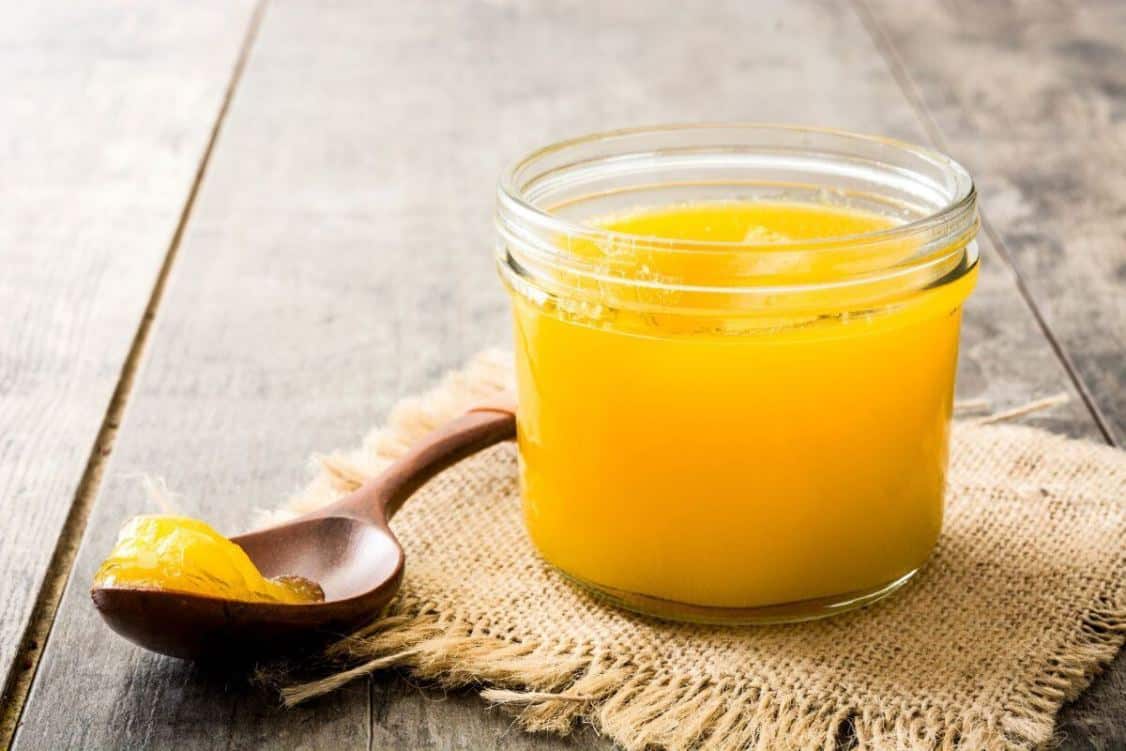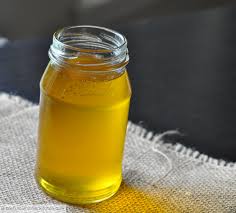Ghee..I can not believe it is not butter
Recipe Key
 Ghee is used widely throughout India and has a long history as an essential element of Indian cuisine. It is also considered a healing agent in Ayurveda Medicine (the traditional Indian medicine practiced in India for centuries).
Ghee is used widely throughout India and has a long history as an essential element of Indian cuisine. It is also considered a healing agent in Ayurveda Medicine (the traditional Indian medicine practiced in India for centuries).
One of my yoga instructors here in India says little ghee will help loosen up tight hamstrings and recommends ghee for a host of ailments ranging from poor digestion to memory loss. The Ayurveda doctor John Doulliard uses ghee medicinally in his detox programs.
Ghee’s nutrition and health properties are touted as ideal for anyone from athletes to simple dieters. Ghee is often used in religious ceremonies. The French call ghee clarified butter; you have probably had it with lobster.
So what exactly is this liquid gold and how does it differ from regular butter. Ghee is butter that has been cleared of all the milk proteins and solids. Traditionally it is made from Buffalo milk and more recently from cow’s milk. The butter is heated which causes it to separate into 3 parts. The milk fat solids sink to the bottom, the water rises to the top and what is left in the middle is the ghee, a clear golden oil.
This ghee is free from lactose and casein which are the parts of milk most people are sensitive to. It has such a delicious taste, you will say “I can’t believe it is not butter” but it is a safer alternative for those who are lactose intolerant. So you can spread it on your gluten free muffin….woo hoo.
Ghee has the highest source of butyric acid of any food. Our gut literally makes its own “ghee,” or butyric acid, that supports immunity, colon health, and healthy microbes! It is a great source of healthy saturated fat and a great cooking oil!
 Ghee is healthy to cook with at high temperatures because it will not burn during frying (this is known as a high smoking point), and possesses a more buttery flavor than vegetable oils. It oxidizes less readily than vegetable oil, is less likely to cause free-radical damage, and is ultimately more healthful at these higher temperatures.
Ghee is healthy to cook with at high temperatures because it will not burn during frying (this is known as a high smoking point), and possesses a more buttery flavor than vegetable oils. It oxidizes less readily than vegetable oil, is less likely to cause free-radical damage, and is ultimately more healthful at these higher temperatures.
Health Benefits of Ghee
- Reduces inflammation in your joints. Ghee lubricates the connective tissues and promotes flexibility
- Reduces inflammatory conditions by reducing seepage of undigested food particles, and aids in repair of the mucosal wall.
- Aids digestion -Ghee is rich in butyric acid, a short-chain fatty acid that nourishes the cells of the intestines. It helps ignite the digestive fires to break down your food. It does this by balancing the secretion of necessary stomach acid that facilitates the breakdown of our food helping to deliver the nutrients to all of your cells.
- It contains fat soluble vitamins such as A, D and E and hence can benefit vegetarians and children to help with bone growth and organ integrity.
- Boost the immune system – Ghee harbors phenolic antioxidants feeding all layers of body tissue and serving to strengthen the immune system
- Cancer preventative – A high concentration of butyric acid, a fatty acid that contains anti-viral properties, is believed to inhibit the growth of cancerous tumors.
- Helps with ulcers,, constipation and the promotion of healthy eyes and skin – studies are on going
- An India folk remedy for thousands of years, ghee is also said to promote learning and increased memory
How To Use Ghee
- Spread on toast, muffins, pancakes or waffles in place of butter
- Toss into fresh popped popcorn or make your own: Melt ghee, add salt and popcorn, pop until done.
- Scallion spread – Mix with a good quality coarse sea salt like Celtic Sea Salt. Add scallions and spread over whole grain crackers. Unlike cold butter, ghee spreads easily.
- Use in place of regular butter or vegetable oil for sautéing, broiling or basting; it doesn’t smoke or burn as easily and tastes great.
- Use in place of butter for drizzling over fresh steamed vegetables, grain dishes, fish, poultry, and meats.
- Combine minced garlic with plenty of dried herbs such as thyme, rosemary, sage, and parsley. Add salt, pepper, and enough ghee to make an herb paste; rub into a chicken and roast until done. Baste with pan juices while cooking.
- Stir fry greens such as kale, collards, and Swiss chard in ghee for great flavor and digestibility
- Scramble or fry eggs in ghee – they won’t stick to the pan.
- Make a French-style omelet with ghee; it’s firm and won’t turn brown like with butter.
- Massage into skin instead of lotion or massage oil; it keeps skin and joints supple.
- Keep lips moist: use ghee in place of lip balm.
- Rub ghee into cuticles to help keep nails in good shape.
Where to get it?
You can buy it in most health food stores. The following are brands I know are free from chemicals and antibiotics. These companies make ghee from grass fed cows, Ancient Organics and Organic Valley, available in most health food stores. You can also make your own.
Recipe
Ingredients
1 pound butter organic butter. (Since it is concentrated any antibiotics, hormones and chemical pesticides will be concentrated in the ghee if they were in the butter and previously the milk)
Directions
- Place butter in medium saucepan over medium heat.
- Bring butter to boil. This takes approximately 2 to 3 minutes.
- Once boiling, reduce heat to medium. The butter will form a foam which will disappear.
- It will stop bubbling and then a second foam will appear. Ghee is done when a second foam forms on top of butter, and the butter turns golden.
- Approximately 10-15 minutes.
- Brown milk solids will be in bottom of pan
- Gently pour into heatproof container through fine mesh strainer or cheesecloth. Store in airtight container being sure to keep free from moisture.
- Ghee will last up to a month at room temperature or even longer in the fridge. I typically store mine in the fridge, just to me safe.
